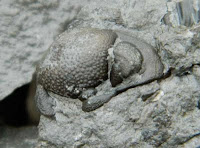 |
| Butterflyweed (Asclepias tuberosa) |
Please contact Classical Formulas for more information or to register!
-kim
Botanical Medicine Certificate Program
Medical Herbalism Part II
January 12 – February 9th, 2012
This Course is the second in a series of three herbal study programs to be offered at Clifton Springs Hospital through the Integrative Medicine department, The Botanical Medicine Institute, and Classical Formulas. While each series has a similar format, they will contain different information. These classes are appropriate for health care providers, people employed in health related businesses or anyone interested in Herbalism.
 |
| Goldenseal (Hydrastis canadensis) |
Dr. Moore and herbalists from Classical Formulas Herbal Medicinary will instruct these classes. Dr. Moore has a life-long interest and extensive education in the field of Herbalism, both Western and Eastern.
You may register for the whole series or at the beginning of each class. Students may begin ANY series at ANY time with no prerequisites of the previous series. Each series is a stand-alone module. Students completing all three of the series (Parts I, II & III) will receive a certificate upon course completion. To be certain you have a place in class please register early, as class size is limited.
 |
| Holy Basil (Tulsi or Ocimum sanctum) |
Tuition is $120 or $25 per class. Contact Classical Formulas for Registration at 315-462-0190 by January 11th.
PLEASE NOTE: All classes are held on Thursdays at Clifton Springs Hospital from 6:30-8:30 pm with the exception of the herb walk on Saturday January 28th, 2012 held at Lamberton Conservatory at 10:00am.
Course Descriptions
 |
| Rose - "Alba" (Rosa rugosa) |
Learn about herbs and homeopathy used for stress, immune stimulation and for combating specifically colds and influenza. Will also cover single herbs from traditional Indian medicine, (Ayurvedic Medicine).
Class 2 – Herbal Medicine Making – January 19th, 2012
Learn how herbs are used to create various herbal therapeutics. Participate in some hands on preparation of herbal formulas.
Class 3 – Herb Pairs/Drug Interaction – January 26th, 2012
This class will focus on paired herbs that are therapeutic for specific conditions. Information on interactions that can occur between medicines and herbs will also be discussed as well as herbal dosages for children. Will also cover Tibetan herbal medicine.
 |
| Osage Orange Maclura pomifera |
Class 4 – Plant Identification/Herb Walk – January 28th, 2012
This class will be a 3+ hour walk to identify plants in the Lamberton Conservatory located in Highland Park. This is essentially a green house so the temperature will be comfortable without a heavy jacket. There will also be an additional $3 fee per person for admission to the conservatory, $2 for anyone under 18.
Class 5 – Herbal Formulas/Modifications – February 2nd, 2012
This class will focus on herbal formulas and how the herbs in each formulas work on the body and how they can be modified to fit a specific condition or person. Discussion of how the pulse and tongue can be used to diagnose a condition. Will also cover Ayurvedic herbal formulas.
Class 6 – Homeopathy and First Aid – February 9th, 2012
Learn how homeopathic remedies are used for first aid, and many other conditions. Will also cover first aid from Ayurvedic medicine.



























